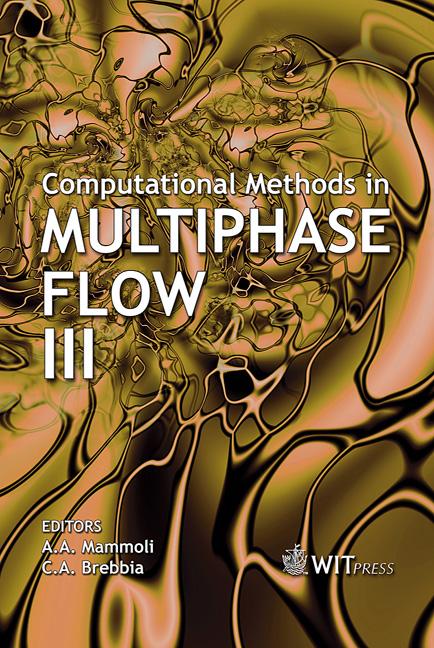Interfacial Phenomena During Crystal Growth: Solute Redistribution, Double-diffusive Convection And Non-isothermal Phase-change
Price
Free (open access)
Transaction
Volume
50
Pages
11
Published
2005
Size
1,179 kb
Paper DOI
10.2495/MPF050131
Copyright
WIT Press
Author(s)
W.-Q. Lu, K. Shi & J. Liu
Abstract
A simplified mathematical physical model with axisymmetric dual reciprocity boundary element method (ADRBEM) and finite element method (FEM) is used to numerically simulate the interfacial phenomena during crystal growth: the solute segregation, redistribution and non-isothermal phase change on the interface between crystal and thawing fluid, and the double-diffusive convection driven by the solute gradient and thermal gradient. Some interesting flow physical phenomena are found. Keywords: solute redistribution, non-isothermal phase change, double-diffusive convection. 1 Introduction The vertical Bridgman process in a circular ampoule has been used widely for growing the high quality II–IV semiconductor family such as HgCdTe, HgZnTe and CdZnTe, etc. Solute segregation, diffusion and redistribution will occur at the phase interface during the crystal growth, so a solutal gradient is generated. Hence, the double-diffusive convection is driven by the solute gradient together with the thermal gradient in the fluid phase. Simultaneously, the variation of solute concentration on the phase-change interface produces non-isothermal phase-change characters. The growth quality of the crystal is largely controlled by these interfacial phenomena. However, the devoid of literature is detailed numerical simulation works for some basic problems, such as the factors to affect the region of solute redistribution, the non-isothermal phase change and double-diffusion convection phenomena. The main objective of this paper is to
Keywords
solute redistribution, non-isothermal phase change, double-diffusive convection.





